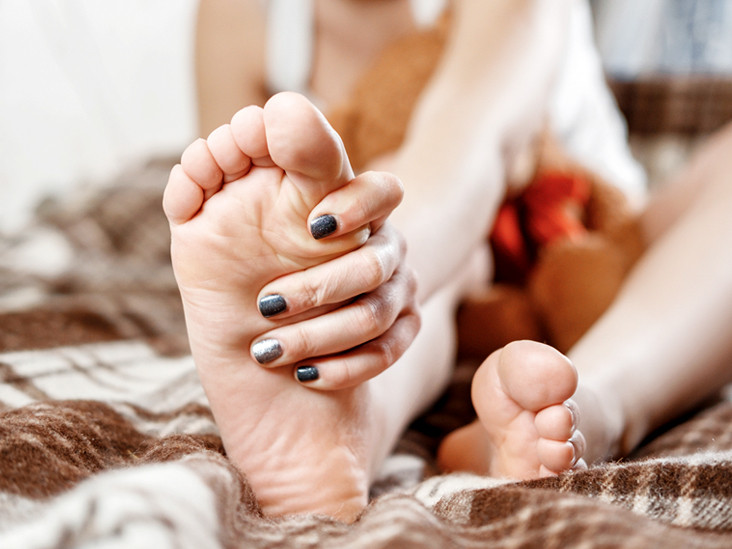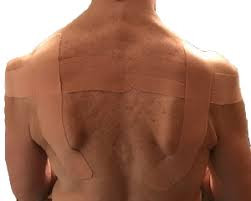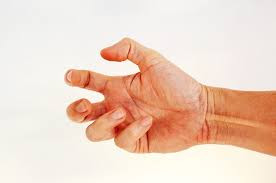Definisi
Claw foot merupakan kelainan atau deformitas kaki yang membentuk cakar. Pada claw foot, sendi jari kaki yang dekat dengan pergelangan kaki menekuk ke atas, sedangkan sendi yang lain menekuk ke bawah. Kondisi ini menyebabkan kaki terlihat seperti cakar. Kadang, claw foot juga disertai dengan punggung kaki yang tertekuk ke atas, disebut sebagai cavus.
Claw foot dapat merupakan kondisi bawaan lahir (kongenital) atau terbentuk akibat adanya penyakit lain (didapat). Bentuk kaki claw foot umumnya tidak berbahaya atau mengancam nyawa, namun claw foot bisa merupakan tanda dari kondisi yang lebih serius, seperti cerebral palsy atau diabetes. Claw foot dapat menimbulkan nyeri karena adanya kalus atau kapalan pada sendi-sendi dan luka atau ulkus. Masalah lain dari claw foot adalah kesulitan untuk mencari sepatu yang nyaman. Walaupun tidak mengancam nyawa, claw foot perlu ditangani dengan baik karena jika tidak, kaki dapat menjadi kaku permanen.
Penyebab
Claw foot dapat berkembang akibat adanya penyakit dasar lain. Contohnya, Anda dapat mengalami claw foot setelah melakukan operasi di daerah pergelangan kaki. Kerusakan saraf dapat melemahkan otot-otot kaki, sehingga menciptakan ketidakseimbangan. Hal ini memaksa jari-jari kaki Anda untuk menekuk. Selain itu, peradangan dalam jangka waktu lama juga dapat membuat kaki tertekuk. Penyakit lain yang dapat menyebabkan claw foot, di antaranya:
- Artritis reumatik (RA), merupakan penyakit autoimun di mana sistem imun menyerang sel-sel tubuh yang sehat, termasuk pada sendi. Hal ini menyebabkan peradangan jangka panjang yang dapat mengubah bentuk kaki.
- Cerebral palsy, merupakan kondisi gangguan persafaran yang mengganggu tonus dan kekuatan otot, sehingga menyebabkan otot terlalu kaku atau terlalu lemas. Hal ini disebabkan oleh gangguan pada perkembangan otak pada masa kehamilan atau kelahiran.
- Diabetes, merupakan kondisi tubuh dimana kadar gula darah tinggi akibat resistensi insulin atau produksi insulin yang tidak cukup. Selain menyebabkan kerusakan pada pembuluh darah, diabetes juga dapat merusak persarafan dan menyebabkan neuropati. Neuropati pada kaki dapat menyebabkan perubahan pada bentuk kaki, salah satunya adalah claw foot.
- Stroke, merupakan kondisi terganggunya aliran darah ke otak yang disebabkan oleh sumbatan atau pecahnya pembuluh darah. Stroke dapat merusak persarafan dan mengganggu fungsi otot, termasuk pada kaki.
Menggunakan sepatu yang kurang sesuai dengan bentuk kaki juga dapat menyebabkan claw foot.
Faktor Risiko
Claw foot lebih sering terjadi pada orang yang:
- Memiliki riwayat keluarga dengan claw foot
- Memiliki penyakit seperti artritis reumatik, diabetes, dan stroke (terutama jika tidak dikontrol dengan baik)
- Memiliki arkus atau lengkung kaki yang tinggi
- Memiliki kebiasaan memutar kaki ke sisi dalam ketika berjalan
Gejala
Gejala dari claw foot adalah:
- Bentuk jari-jari kaki yang menekuk ke bawah
- Terdapat kalus atau kapalan, akibat tekanan dan gesekan berulang pada kaki
- Terdapat lepuhan
- Nyeri
- Kaki membengkak
- Luka dalam atau ulkus pada kaki (lebih jarang)
Terdapat dua stadium dari claw foot, yaitu:
- Stadium fleksibel, yaitu stadium awal claw foot di mana jari-jari masih dapat digerakkan pada sendi-sendi, walaupun lebih kaku dibandingkan orang normal
- Stadium rigid, yaitu stadium akhir dari claw foot di mana jari-jari sudah tidak dapat digerakkan kembali dan kaku membentuk seperti cakar. Operasi akan lebih efektif jika dilakukan pada stadium fleksibel.
Diagnosis
Dokter Anda akan menanyakan perjalanan penyakit, keluhan Anda, riwayat penyakit dahulu dan pengobatannya, riwayat kondisi yang sama pada keluarga, pengobatan yang telah dicoba, dan gejala penyerta seperti kapalan, nyeri, baal, dan lain-lain. Pada pemeriksaan fisik, dokter akan menyentuh dan menggerakkan kaki Anda untuk menentukan stadium dari claw foot. Claw foot juga dapat disertai dengan gangguan saraf, sehingga dokter juga akan melakukan pemeriksaan saraf untuk melihat sensasi raba, sentuh, dingin, panas, dan refleks pada kaki. Jika diperlukan, dokter Anda akan melakukan pemeriksaan X-ray untuk melihat susunan tulang kaki Anda. Dokter umum akan merujuk Anda ke spesialis ortopedi atau podiatris.
Tata Laksana
Stadium dan tingkat keparahan dari claw foot dapat menentukan tata laksana apa yang diperlukan untuk mengatasi kondisi ini dan mencegah perburukan. Jika claw foot masih dalam stadium fleksibel, dokter Anda akan menyarankan untuk melakukan splinting dengan mengikat jari yang mengalami deformitas ke jari yang sehat. Dokter Anda juga akan merekomendasikan latihan-latihan untuk menjaga bentuk kaki Anda.
Perawatan di Rumah
Beberapa perawatan yang dapat Anda lakukan di rumah, antara lain:
- Menggunakan sepatu yang memiliki ruang yang cukup untuk jari-jari kaki Anda, memilih heels yang rendah, dan bentuk yang baik untuk arkus atau lengkung telapak kaki Anda
- Menggunakan sol sepatu yang empuk
- Menggunakan padding di dalam sepatu Anda
- Menguatkan dan meregangkan otot jari-jari kaki melalui latihan serta olahraga
- Memasang tape untuk menjaga bentuk jari-jari kaki Anda
- Tidak menggunakan high heels
- Tidak menggunakan sepatu yang sempit
Anda dapat berlatih menggerakkan kaki Anda dengan menggunakan handuk, kelereng, atau bola kecil.
Operasi
Jika perawatan claw foot di rumah tidak menunjukkan adanya perbaikan atau kondisi claw foot Anda sudah kaku, dokter Anda akan menyarankan untuk melakukan operasi. Operasi yang dapat dilakukan antara lain bertujuan untuk:
- Memperbaiki posisi tendon (penghubung antara tulang dan otot)
- Memendekkan tulang jari-jari kaki
- Memposisikan jari-jari kaki dengan pin untuk sementara waktu hingga posisi kaki kembali normal
- Toe fusion, memfiksasi jari-jari kaki yang tidak normal ke jari kaki yang normal
Umumnya, penyembuhan dari operasi memakan waktu sekitar 4–6 minggu.
Komplikasi
Kondisi claw foot dapat menghambat Anda ketika berjalan dan berlari. Namun, hal ini dapat ditangani dengan latihan yang konsisten dan senantiasa menggunakan sepatu yang nyaman.
Operasi dari claw foot memiliki risiko komplikasi, antara lain adalah kerusakan saraf, kaki menjadi kaku, infeksi, dan rekurensi atau berulangnya claw foot setelah operasi. Konsultasikan cara-cara agar claw foot tidak kembali lagi dengan dokter Anda.
Pencegahan
Penting untuk mencegah terjadinya claw foot, terutama jika Anda memiliki kondisi penyakit yang dapat menyebabkan claw foot di kemudian hari, seperti diabetes atau artritis. Langkah-langkah yang dapat dilakukan untuk mencegah claw foot antara lain:
- Melatih otot dan pergerakan jari-jari kaki Anda. Latihan ini dapat dilakukan dengan mencoba mengambil benda-benda kecil dengan menggunakan jari-jari kaki.
- Menggunakan sepatu yang nyaman, tidak terlalu sempit, memiliki support yang baik dan ruang yang lebar untuk jari-jari kaki.
- Gunakan batu apung untuk membersihkan kalus atau kapalan pada kaki Anda. Lakukan dengan gerakan memutar dan lembut.
Kapan Harus ke Dokter?
Segera periksakan kondisi kaki Anda, jika Anda merasa nyeri ketika berjalan, melihat adanya perubahan bentuk kaki, dan jika Anda mengalami kesulitan untuk menggerakkan sendi jari-jari kaki Anda. Pengobatan yang cepat dapat membantu mencegah perburukan dari claw foot.
Mau tahu informasi seputar penyakit lainnya? Cek di sini, ya!
- dr Nadia Opmalina
Cleveland Clinic. (2021). Claw toes. Clevelandclinic.org. Available from: https://my.clevelandclinic.org/health/diseases/16875-claw-toes
Gosett T. (2019). What you should know about claw foot. Healthline. Available from: https://www.healthline.com/health/claw-foot
Allen D. (2021). Claw toe. Orthobullets. Available from: https://www.orthobullets.com/foot-and-ankle/7013/claw-toe
Benjamin C. (2019). Claw foot. MedlinePlus. Available from: https://medlineplus.gov/ency/article/003168.htm












